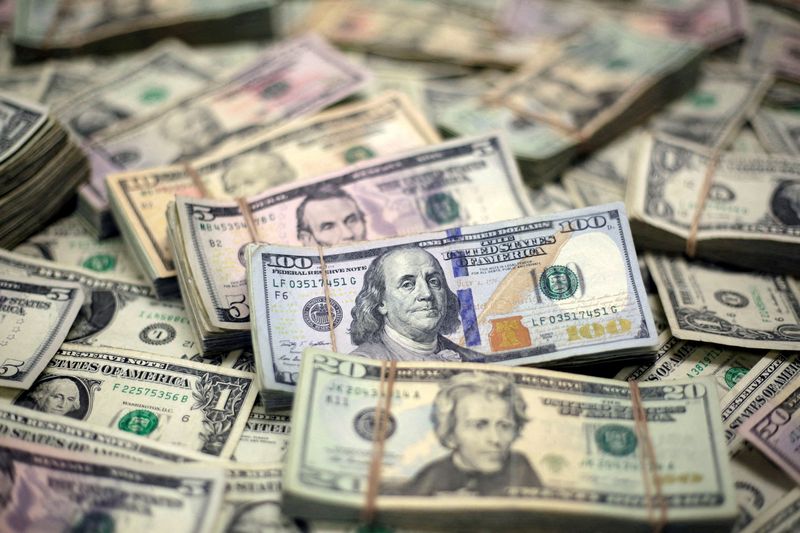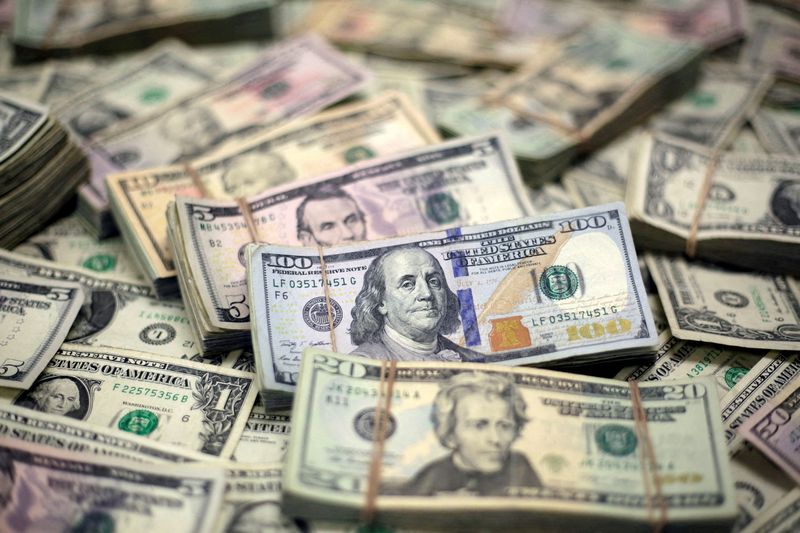
By Karen Brettell
(Reuters) – Safe haven currencies the Japanese yen and Swiss franc gained on Tuesday after news reports that Iran is preparing to imminently launch a ballistic missile attack against Israel, while U.S. jobs data showed a resilient labor market.
A senior White House official said on Tuesday that the United States is actively supporting preparations to defend Israel.
“The market has largely ignored the Middle East conflict in the last month, but a direct Iran-Israel confrontation is always at risk of spiraling,” said Adam Button, chief currency analyst at ForexLive in Toronto.
The Japanese yen strengthened 0.1% against the U.S. dollar to 143.5. The dollar was roughly flat against the Swiss franc at 0.846, erasing earlier gains.
The dollar index rose 0.4% to 101.15.
U.S. data on Tuesday showed a solid economy, a day after Federal Reserve Chair Jerome Powell pushed back against the likelihood of another 50-basis point rate cut when the U.S. central bank meets next month.
U.S. job openings unexpectedly increased in August after two straight monthly decreases, but hiring was soft and consistent with a slowing labor market.
U.S. manufacturing also held steady at weaker levels in September, the Institute for Supply Management (ISM) said, but new orders improved and prices paid for inputs declined to a nine-month low, which together with falling interest rates bode well for a rebound in activity in the coming months.
Traders are trying to gauge the likelihood that the Fed will cut rates again by 50 basis points at its Nov. 6-7 meeting.
Powell indicated on Monday the Fed would likely stick with quarter-percentage-point interest rate cuts moving forward and was not “in a hurry” after data boosted confidence in ongoing economic growth and consumer spending.
Traders are pricing in a 41% chance of a 50 basis point reduction in November, up from around 35% on Monday but down from 58% a week ago, according to the CME Group’s (NASDAQ:CME) FedWatch Tool.
The U.S. central bank on Sept. 18 cut rates by 50 basis points, which Powell called a “recalibration” to account for the sharp decline in inflation since last year.
“The door has not been closed on a 50 bps cut, because if economic data tanks then such a cut is warranted. But Powell clearly thinks markets are overly excited” about upcoming cuts, said Matt Simpson, senior market analyst at City Index.
The ISM’s non-manufacturing report on Thursday and Friday’s closely watched government jobs report for September are the next major U.S. economic releases.
The euro was last down 0.55% at $1.1075, following dovish comments by European Central Bank (ECB) officials.
ECB President Christine Lagarde told parliament that “the latest developments strengthen our confidence that inflation will return to target in a timely manner,” and said this should be reflected in the Oct. 17 policy decision.
Policymaker Olli Rehn also said that the slowing down in euro zone inflation means that there are more reasons to justify an interest rate cut at the ECB’s October policy-setting meeting.
Euro zone inflation dipped below 2% for the first time since mid-2021 in September, Eurostat data showed on Tuesday.
Traders are also focused on the new government in Japan, where the Prime Minister Shigeru Ishiba on Tuesday unveiled his cabinet as he seeks to heal party divisions and secure a national mandate with an Oct. 27 snap election.
Ishiba is seen by markets as a monetary policy hawk, despite a recent toning-down of rhetoric on the need for policy normalization.
Bank of Japan policymakers discussed the need to go slow in raising interest rates as jittery markets clouded the outlook, a summary of their September meeting showed, reducing the chance of a near-term rate hike.
The Australian dollar weakened 0.32% to $0.6891.

Australian retail sales rebounded more than expected in August after a soft July as unusually warm weather brought forward spring spending, a possible sign consumers are dipping into extra income from recent tax cuts.
In cryptocurrencies, bitcoin fell 1.90% to $62,570.
This post is originally published on INVESTING.


